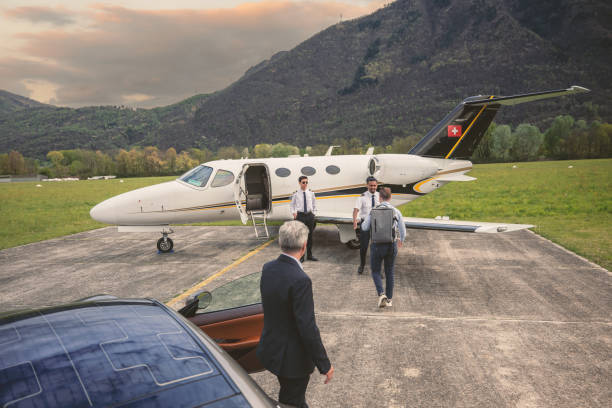How Much a Plane Weight? Technical Guide 2025

While planes aren’t as heavy as professional powerlifters, they bring a mighty wallop to the airline industry! Dimensions and intentions characterize their various degrees of weight. A tiny private aircraft may top at barely 1,500 pounds. A super heavy haul like the Airbus A380, a quadruple-decker airbus with 500 plus passengers, could easily reach 575,000 pounds. That means it would easily outweigh 380 grand pianos!
The federal aviation administration is strict on weight and payload capacity, which is important for a safe flight. The gross weight its hard to calculate and it depends if small aircraft, single-engine plane, large aircraft ( like airbus a series ), or even larger planes. The maximum weight can be totally different , depending on the total mass, , passenger weight, baggage weight, if commercial planes and weight of the fuel.
This is a grand weight that is carefully designed for lift; the exact engineering of powerful engines and aerodynamics combine to conquer gravity and have the airplanes fly across the sky.

How Much a Plane Weigh?
Basics of Airplane Weight
Weight of the airplane doesn’t stay constant either, just as the one of a human body – it changes too depending on what is placed in a plane! Here’s a breakdown of the critical factors affecting airplane weight. Here’s a breakdown of the essential factors affecting airplane weight:
✔️ Empty Weight: This always covers all the aircraft’s weight, minus the passengers, baggage, and fuel load. Please think of this plane as the basic empty weight of the scale without anything to weigh it down. This may range enormously based on the airplane class and its purpose; for instance, small private jets may weigh only a few thousand or so pounds, and some large commercial aircraft may be measured in hundreds of thousands of pounds.
✔️ Maximum Takeoff Weight (MTOW): Each aircraft has a weight limit. Well, weight restrictions on bridges are similar. The total weight of the jet that will be taken off is called the maximum takeoff weight, and it includes everything on board, including passengers, goods, and fuel that can be legally taken off the airplane. OMW is reasonably necessary since it tells what the aircraft’s capacity is for the payload and the flight range.
✔️ Weight Distribution:Airplanes are like a seesaw. The weight needed for safe and efficient operation should be centred. Think of a passenger jet with all the extra weight on the front of an airplane—take off would be impossible! Thus, weight distribution is always calculated carefully, considering both the number of passengers and their luggage and the amount of fuel needed.

Understanding Weight is Essential
It is commonly known that the heavier an airplane is, the more fuel it consumes and the more expensive it is to operate. However, aircraft weight and fuel efficiency conservation is not only an economic issue but an essential matter for safe and efficient air travel. Here’s why:
✔️ Weight Limits: The airplane cannot bear more than the maximum takeoff weight of its MTOW; it’s the same as putting too much pressure on the bridge. The limit for exceeding it should be made available to all, and zero tolerance policy.
✔️ Performance: The plane’s loading does impact the flight and airplane reaction. The balance between tail and nose can play a factor for a flying car, just as a downwing fighter jet is dynamic. One with a weight that is too heavy for the tail will be challenging to control, and one where the landing gear might have been an issue.
We have different packing and travel guide to help you during your travel :
Can you bring a toothbrush on a plane, can you bring a speaker on a plane, can you bring a razor on a plane , can you bring fishing hooks on a plane , can you take hand sanitiser on a flight , can you take video game console on a plane

How Do Airlines Manage Weight?
Airline companies are not telekinesis masters – before takeoff, they carefully weigh all the factors that can influence the flight. So, let us start with figuring out parameters such as the number of passengers on board, the amount of freight, and the amount of fuel required for the specified distance and weather conditions. With the help of this data, the MAUMS stays within the MTOW limit, and weight is distributed ideally for safe airplane flight.
Fuel Efficiency also Matters Although fuel is the heaviest item on board a plane, airlines do not want it overloaded—it cuts fuel economy! They weigh out fuel loads really carefully to ensure they have enough during the flight, considering aspects such as weather conditions and route should there be any diversion.

Factors Affecting Airplane Weight
Aircraft consist of complex conglomerates comprised of parts and structure elements, each with weight being the factor considered in every part of the flight. Here’s a breakdown of the critical factors that influence an airplane’s weight: Here’s a breakdown of the essential factors that influence an airplane’s weight:
✔️ Empty Weight:It is the airplane’s weight without considering the passengers, the cargo, and the fuel margin. However, it is a subject one needs to pay attention to, especially when the aircraft is more significant and built for enormous reasons. The lightest private jet type that can be imagined could weigh just a few thousand pounds, while a super heavy Airbus A380 may weigh the most, even with an empty weight exceeding 200 thousand pounds. This weight embodies the components manifested in the airframe, engines, landing gear, avionics, and the internal packaging of all these little portions needed for the flight to be complete.
✔️ Payload: This means that whether it is a huge passenger plane or a small, light smaller one, it would carry the passengers, cargo, and baggage. The airline’s methodology is to estimate payload based on passengers’ reservations, cargo being sent and belongings’ mass. The more payload, the heavier the airplane and the safer the start-up.
✔️Fuel Weight: Fuel is the most significant single-use component on most airplanes. The quantity of fuel on board is determined by several factors, such as flight distance, the current weather conditions and the possibility of finding an airport along the route if necessary. Airlines carefully determine the fuel needed to fly the designed route, factoring in backup fuel as a contingency for the weather forecasts that might include detours or holding positions. Ultra lightweight gives fuel extra power; therefore, the passenger aircraft is the best way to achieve efficiency by using the most fuel.
✔️ Weather Conditions: WeatherWeather has a severe effect on the aircraft mass. Due to such weather conditions, airplane lifts are no longer up to the mark, so some weight (load or fuel) is left behind in the ground to reach a balanced takeoff. However, the colder and denser air would create the additional lift required for the slightly heavier takeoff.
✔️ Flight Distance: Estimating longer flights requires additional fuel, which will result in a heavier aircraft at the time of hauling. The length of flight is already considered when estimating the proper payload and fuel load.

Weight Variations in Different Airplanes
Imagine a world where a car was as heavy as another; this is entirely infeasible. Like cars, aircraft are also manufactured in different shapes and sizes, with their weight running from very light to tremendously heavy by the characteristics and designs. Let’s explore the weight variations across different airplane categories:
✔️ Private Jets: Consider these, for instance, as the sleek sports cars of the stars. Specific rates may be put forth for takeoff and optimum cruise, and for those who also consider empty weight, they may begin at 1,500 pounds. From this, you will understand that the largest private jets can cover transcontinental flights, and their weight is 25,000 pounds, if not more.
✔️ Turboprops: These modern, versatile workhorses produce a turbine engine that handles propellers. They can be found on regional flights or by-passing airports, secondary hubs for large airlines. The empty weights of these vehicles are between 5000 and 15000 lb, which gives them a relatively good size and low operation cost ratio.
✔️ Regional Jets: These feeder planes maintain dominance as the preferred means of transportation among short-haul flights. Their empty weight varies between 20,000 and 40,000 pounds, which makes them quick and efficient transportation vehicles within a short distance.
✔️ Single-Aisle Airliners: These heavy lifters most often carry passengers from suburbs to cities and from short-haul international sectors. Famous types of turboprops, such as the Boeing 737 and Airbus A320 family, also have this category. Air transport can be loaded from 80,000 to 120,000 pounds because its dimensions are more significant, and its passenger capacity is higher.
✔️ Wide-Body Airliners and large airplanes: These long-legged birds with wide spans, such as the Airbus A350 and Boeing 787, are state-of-the-art in worldwide air transportation. The Astronaut invariably has a very high empty weight of nearly 250,000 lbs. High empty weights are caused by their enormity and function to fire long-range.
✔️ Cargo Planes: Freighters are used as the backbone of the cargo air traffic, which prioritizes cargo capacity over passenger comfort. Their empty weight can range from 200,000 to 250,000 pounds, ready for their massive cargo loads.

More Than Just Size
Aircraft design and type is important , but the weight factor beyond airplane size includes more than just the aircraft size. Here are some other factors that influence weight: Here are some other factors that influence weight:
✔️ Materials: Modern aircraft use lighter yet stronger materials, such as carbon fibre composites, compared to older models. This reduces aircraft empty weight compared to aircraft of the past.
✔️ Engine Technology: Engines with low fuel consumption help the plane fly at a lower weight than possible, which is used either for cargo or fuel.
✔️ Customization: Be Unique In addition to fuel consumption, airlines can use extra non-essential features, such as integrated entertainment systems, leading to greater empty weight.
Such knowledge is a basis for optimizing airline fleets to ensure the products from the connecting markets and serve the various needs of passengers. A private jet, which is agile and small, consists of a different kind and scale of aircraft to fulfill different goals for its users.
And don’t forget : weight of fuel, optional equipment, cargo hold, hydraulic fluid, weight of the passengers
Don’t forget our amazing travel tips and guide for your trip ! How to pack your backpack , Ultimate travel packing list , Best travel insurance, Vaccines for Africa and Malaria pills , Luggage size , Backpacking base weight , How to pack a tent for backpacking

The Importance of Weight Management
Controlling the amount of aircraft weight has become an essential factor in determining the safety and delicacy of air travel. Here’s why:
✔️ Maximum Takeoff Weight (MTOW): All airplanes, except in exceptional situations, have a limit they must not exceed when cleared for liftoff. This MTOW, however, refers to certain elements like the power of the engine, the wing strength, and the length of the runway. To avoid any kind of hazard, like accidents or crashes, transgressing the MTOW is completely prohibited.
✔️ Performance: When it comes to airplane performance, airplane weight is a critical factor. It can prevent an aircraft from achieving the desired performance in many areas. Taking off and landing distance is the factor for the heavier airplane. Speed efficiency also decreases with an overall weight increase. The correct weight helps eliminate undesired vibrations and supports the airplane in achieving maximum performance in each flight.
✔️ Weight Distribution: Granted, weight distribution is critical, like balancing a seesaw. Airlines must assign passenger and cargo weight carefully and shift things from one side to another of the airplane to keep the plane’s center of gravity on a safe and limited range. The aircraft might be complicated to manage when the weight misalignment occurs in different body sections.
With these factors in place, airlines can guarantee the safety and efficiency of airplanes so that the right amount of weight is maintained before any flight.

Regulation and Standards for Airplane Weight
✔️ Maximum Takeoff Weight (MTOW): This is the highest rung of the airplane weight hierarchy. Every aircraft has a corresponding certified MTOW, which refers to how heavy it can legally depart. After all, the maximum takeoff weight states how much all parts and components, fuel, passengers, etc., add up to. The greater the weight of the aircraft and the speed of the engines, the more influential the wing needs and the shorter the runway may be. The prospect of Exceeding MTOW is a taboo!
✔️ Regulatory Bodies: The national and foreign governmental aviation authorities, such as the FAA and EASA, are in charge of setting up the top-level tolerance and weight control requirements. These norms are then broadly accepted as the minimum safety level among all airlines.
✔️ Weight and Balance Calculations: Websites cater to audiences of the first type, newspapers and news agencies. Home pages provide news about world events for friends and family members who are involved in political subjects. This is achieved by determining the weight of people, cargo, and fuel, which is the MTOW limit, if the restriction is obeyed and the weight is distributed properly for flight performance to be optimum.
✔️ Maintenance and Inspections: Aircraft undergo regular maintenance to ensure that they can handle the weight limitations assigned to them. We need to conduct thorough examinations of the different structural parts, such as those whose weight limit would be affected by wear and tear.
✔️ Pilot Training: Before departure, pilots study weight and balance as well as flight declarations, which govern how much airplane weight their plane can safely carry. Adherence to this platform helps them understand the philosophy underlying safe air traffic control operations.These legal and standard rules and requirements also work jointly to ensure that the planes are within the regulations’ weight range, making the flights safe and controlled.

Final Thoughts
Airplane weight is a remarkable playground of engineering marvels and efficiency levels. The aviation field will be filled with small private jets, and cargo planes can carry significant weight. Each machine will be specifically made and regulated according to its weight range. Airlines are meticulous in their calculations regarding payload, fuel, and weight distribution to ensure flights have the appropriate and best level of performance that provides safety. Many people must know the role of weight reduction techniques and regulations in their flight. When they do, they will see the importance of science and safety regulations in keeping us from getting grounded.

![Can We Take a Laptop on a Plane? [Pro Traveler Guide 2025]](https://funkyfreshtravels.com/wp-content/uploads/2024/07/istockphoto-930716440-612x612-1.jpg)
![Can I Bring Speaker In A Plane ? [Pro Traveler Guide 2025]](https://funkyfreshtravels.com/wp-content/uploads/2024/07/istockphoto-1156519636-612x612-1.jpg)

![Can You Take a Razor on a Plane? [Pro Travel Tips 2025]](https://funkyfreshtravels.com/wp-content/uploads/2024/07/istockphoto-680068744-612x612-1.jpg)

![How Much Hand Sanitizer Can I Take on a Plane? [2025]](https://funkyfreshtravels.com/wp-content/uploads/2024/07/istockphoto-1388199006-612x612-1.jpg)